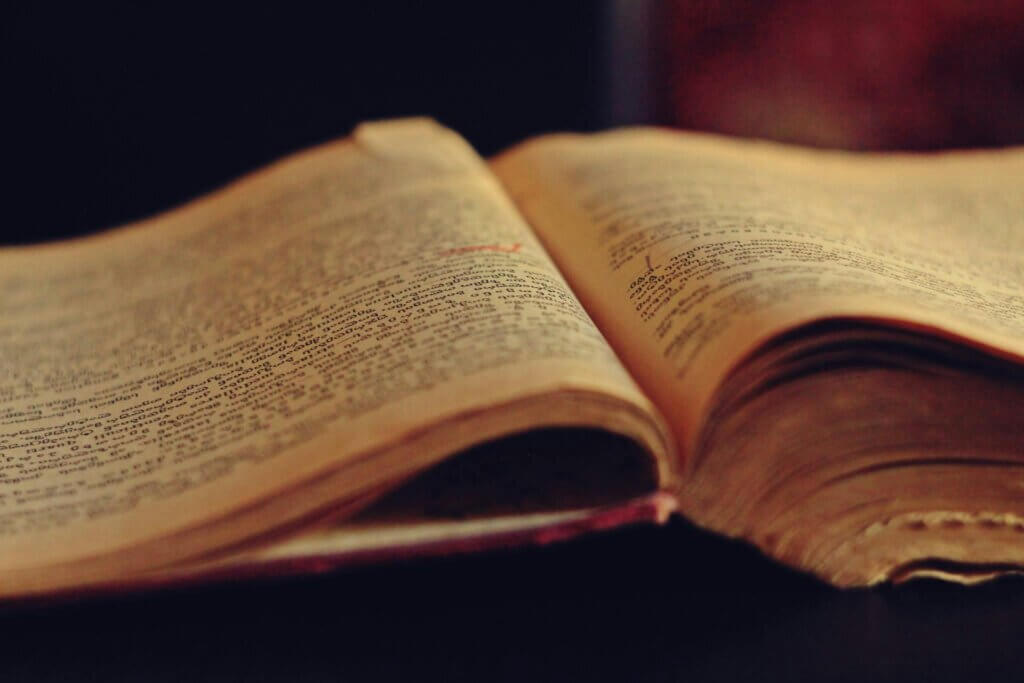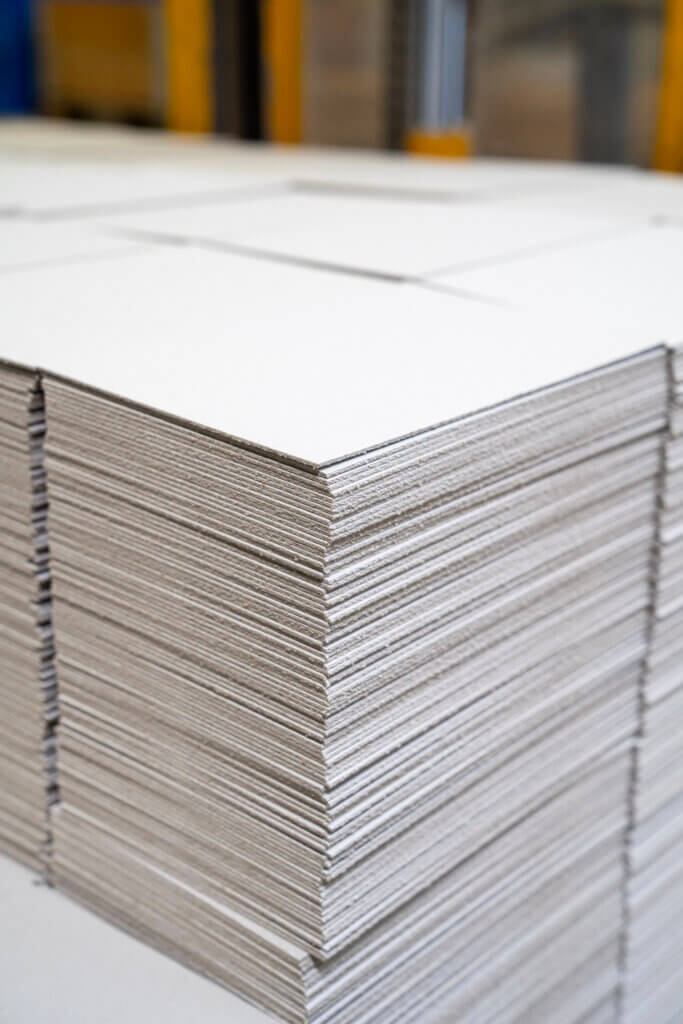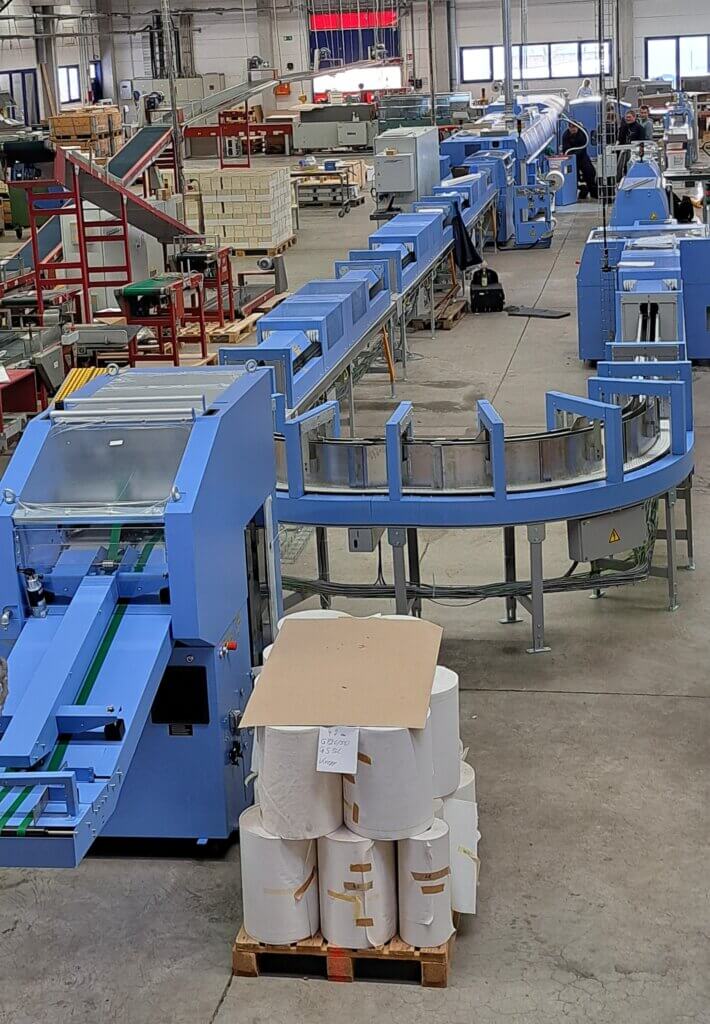Letterpress printing has changed the world – and constantly evolved itself. From Gutenberg’s printing press to modern, sustainable processes, the craft has reinvented itself again and again over the centuries. But what role does letterpress printing play today in the digital age? And how do modern print shops like Beltz Grafische Betriebe combine traditional craftsmanship with innovative technology and sustainability? A look into the past and future of a fascinating craft.
The birth of letterpress printing
The time before Gutenberg: How books were made
Before book printing was invented, the production of books was a laborious and time-consuming manual task. Monks and scholars produced manuscripts by hand in monasteries by transferring texts onto parchment or paper with pen and ink. This work could take months or even years, which is why books were rare and expensive. Only wealthy aristocrats, churches or universities could afford handwritten works.
Early printing techniques also existed in China, such as block printing, in which entire pages were carved into wood and then printed. However, this method was also time-consuming and not very flexible, as each change required a new carving. It was only with the invention of letterpress printing that knowledge became accessible to a wider section of society.

The printing press and its influence on society
Johannes Gutenberg achieved the greatest revolution in book printing in the 15th century with the development of movable type. His printing press made the serial production of books possible for the first time. Knowledge was thus democratized and spread rapidly across Europe. The Reformation, the Enlightenment and many scientific developments were decisively advanced by book printing.
Gutenberg’s invention laid the foundation for modern book production – a craft that has continued to develop over the centuries and still plays a key role in the media landscape today.
Letterpress printing in the modern world
From offset printing to digital printing: technological advances
Since the invention of letterpress printing, the technology has developed steadily. While classic lead typesetting with movable type dominated for centuries, offset printing became the leading method of book production in the 20th century. This process enabled even higher print quality and more efficient processes. Offset printing is still used today for large print runs, as it produces razor-sharp print images and is also economical for large quantities.
Digital printing brought an even bigger change. Unlike offset printing, where printing plates have to be created, digital printing is done directly from a file onto the paper. This allows smaller print runs or even individual items to be produced cost-effectively. Digital printing has opened up new possibilities, particularly in the print-on-demand sector – books can only be printed when they are ordered, thus avoiding storage costs and overproduction.
Efficiency, quality and individuality through modern processes
Modern printing techniques not only offer greater efficiency, but also more flexibility in terms of design. While offset printing is ideal for large print runs, digital printing enables a high degree of individualization. Books can be personalized, printed in small series or provided with special finishes.
Print quality has also improved considerably thanks to technological progress. Colors are more brilliant, details are sharper and there is a greater variety of paper types to choose from. In addition, modern machines enable more environmentally friendly production with reduced material consumption and more energy-efficient processes.
Thanks to these developments, letterpress printing remains an important part of the media landscape even in the digital age. Whether large-scale book productions or individual special editions – modern printing techniques offer the right solution for every requirement.
Sustainability in book printing: responsibility for the future
Environmentally friendly materials and resource-saving processes
Sustainability is playing an increasingly important role in modern book production. While book printing was often associated with high paper consumption and chemical printing processes in the past, print shops are now increasingly relying on environmentally friendly materials and resource-saving processes.

A key aspect is the choice of paper. Many print shops now use certified paper from sustainable forestry that bears the FSC or PEFC seal. These certificates guarantee that the wood used to make the paper comes from responsibly managed forests. Recycled paper is also increasingly being used, which reduces the consumption of virgin fibers and thus conserves valuable resources.
A lot has also happened with printing inks. Water-based, mineral oil-free inks and vegetable-based inks are increasingly replacing conventional inks that contain solvents or heavy metals. These environmentally friendly alternatives not only reduce the impact on the environment, but also improve the recyclability of books.
Recycling and climate-friendly production
Another important aspect of sustainable book production is recycling. Modern processes make it possible to efficiently reintroduce printed paper into the production cycle. Waste paper can be recycled several times, which significantly reduces water and energy consumption in paper production.
In addition to the choice of materials, print shops are also optimizing their production processes in order to reduce their ecological footprint. Energy-efficient machines, climate-neutral printing processes and waste-free production are now standard for many environmentally conscious companies. In addition, some print shops rely on CO₂ compensation programs in which emissions are offset through reforestation projects or investments in renewable energies.
Thanks to these sustainable measures, book printing will remain an environmentally friendly alternative to digital consumption in the future.
Letterpress printing at Beltz Grafische Betriebe
Craftsmanship perfection with state-of-the-art technology
At Beltz Grafische Betriebe, centuries-old craftsmanship meets state-of-the-art printing technology. Whether high-quality hardcovers, flexible paperbacks or specialized print products – every book is produced with the utmost precision and care. By using offset and digital printing, both large print runs and small, individual productions can be realized.
Beltz offers a wide range of options to make books unique, particularly in the area of finishing. From embossing and dust jackets to special varnishes – high-quality materials and innovative printing processes ensure that every book not only looks good, but also feels good.
Bookbinding is also carried out with great craftsmanship. Depending on the requirements, adhesive binding or thread stitching is used to ensure high stability and durability. Beltz relies on state-of-the-art machines that guarantee consistently high quality and can precisely implement even the most demanding designs.
Sustainability as a corporate philosophy
Sustainability is an integral part of Beltz Grafische Betriebe’s corporate philosophy. The company relies on environmentally friendly production that combines resource-saving materials and energy-efficient processes.
An important component is the choice of paper: Beltz Grafische Betriebe is FSC®-certified and prefers to use paper from sustainable forestry. The FSC® seal guarantees that the wood used comes from responsibly managed forests.
💡Would you like to find out more about the FSC® certification of Beltz Grafische Betriebe and the sustainable choice of paper? Read our blog article about it!
In addition to the materials, the energy supply also plays a decisive role. Beltz is committed to sustainable mobility and runs its electric vehicles on green electricity, mainly from its own production. The printing processes themselves are also designed to be energy-efficient: Modern machines significantly reduce electricity consumption and minimize waste through optimized production processes.
Through these measures, Beltz Grafische Betriebe combines the highest print quality with a strong environmental awareness – for books that are not only convincing in terms of content, but also ecologically.
Conclusion: Letterpress printing as a craft of the future
Why high-quality books are also in demand in the digital world
Despite digital media, book printing remains an important part of our culture. High-quality books offer a haptic experience that digital content cannot replace. They are durable, valuable and still the preferred choice for many readers – whether as a reference book, novel or artistically designed edition. Thanks to modern printing techniques and sustainable production methods, book printing has evolved and will remain relevant in the future.
Beltz as a partner for modern and sustainable book production
Beltz Grafische Betriebe stands for quality, innovation and sustainability in book printing. With state-of-the-art technology, high-quality materials and environmentally friendly processes, the company sets standards in the industry. Whether it’s classic book production, individual finishing or sustainable printing solutions – Beltz is the right partner for demanding projects.
Would you like to have your own book professionally printed? Contact us – we will be happy to advise you and find the best solution for your project.


